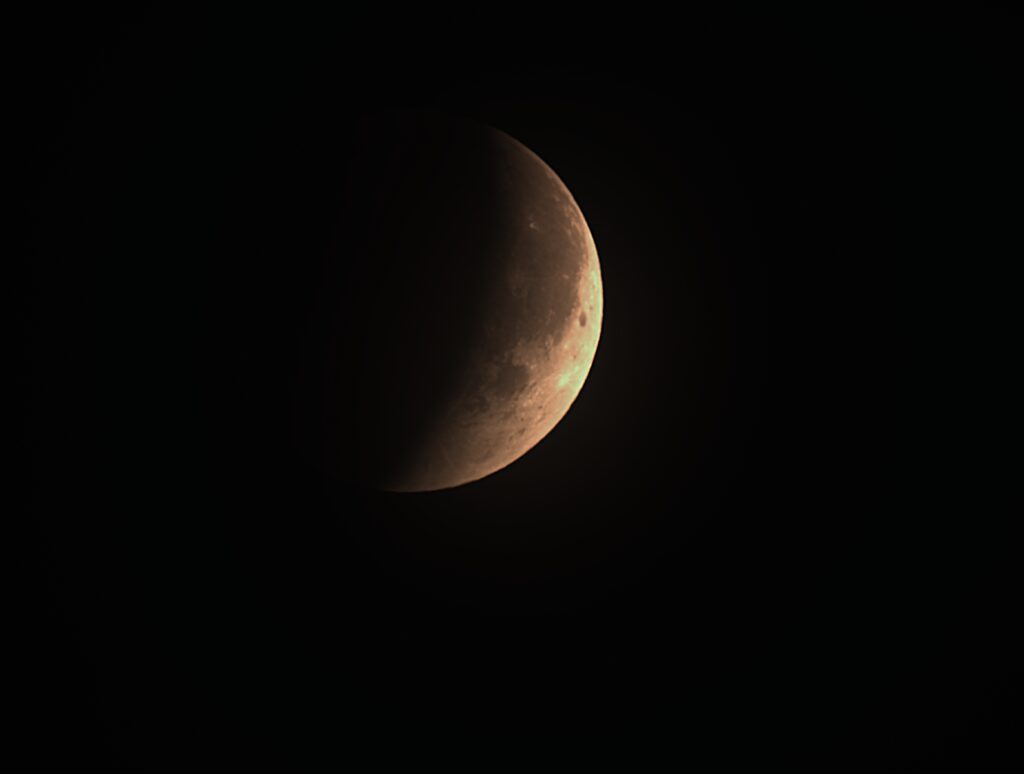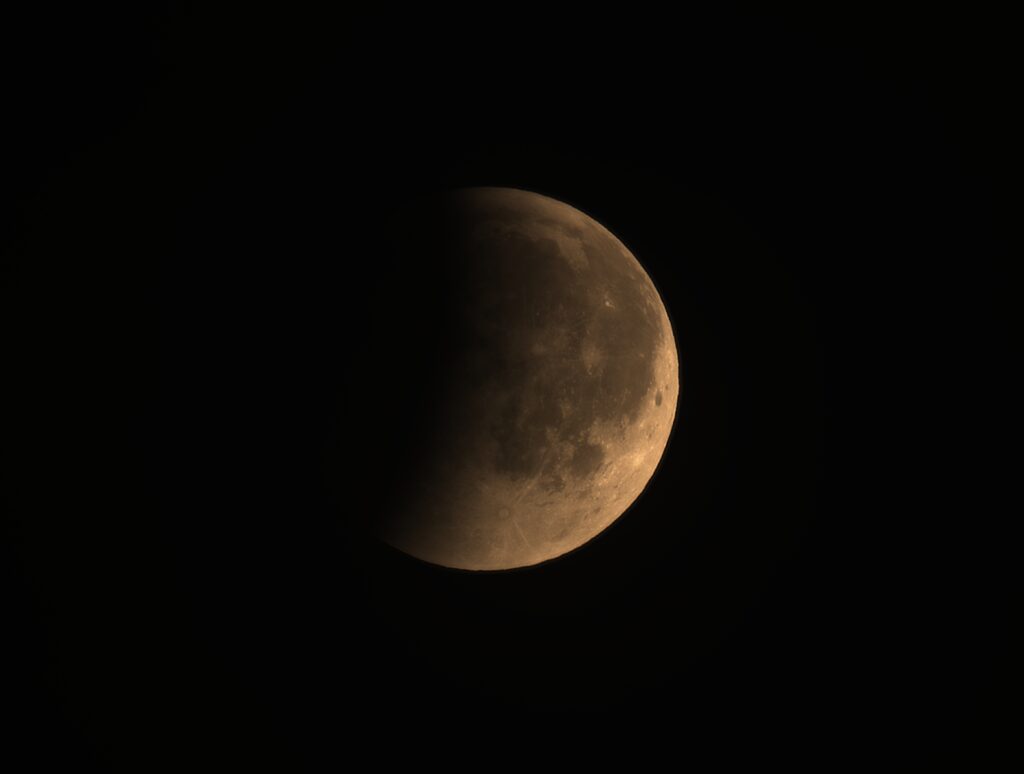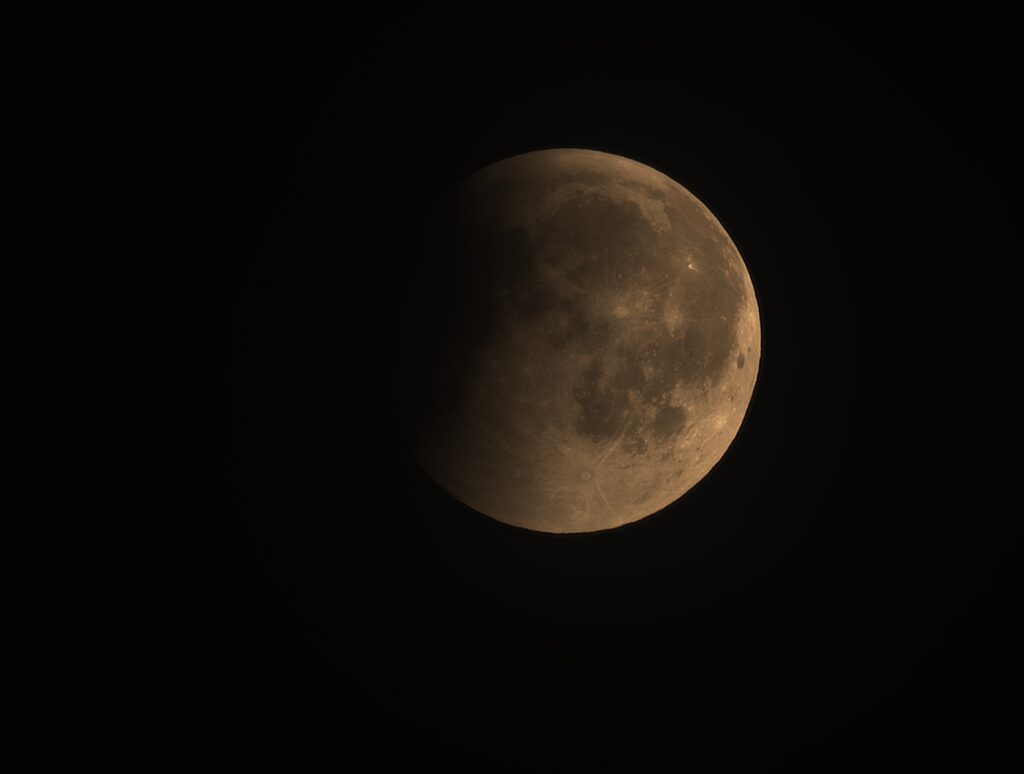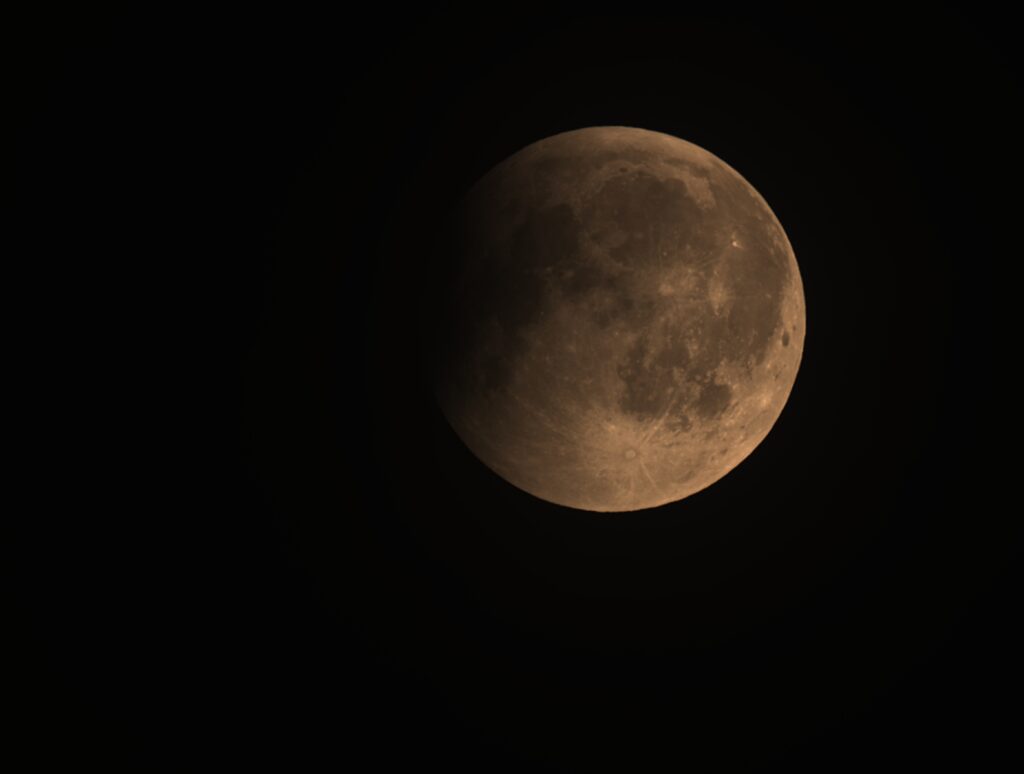A report and photos by Werner Wöhrmann
Lunar eclipses are not very common. To do this, the moon must dip into the shadow of the Earth, which is illuminated by the sun. This can only happen if the sun, earth and moon are sufficiently in line. The plane of the moon's orbit around the earth is inclined by about 5.2° compared to the earth's orbit around the sun (ecliptic). Therefore, the full moon does not dip into the Earth's shadow every time it orbits. Only when the full moon is sufficiently close to one of the two intersections of the ecliptic and the moon's orbit (lunar node) does a lunar eclipse occur.
The kosmos-os.de team wanted to observe the eclipse near the MIK (Museum of Industrial Culture) on the Vosslinke or on the Lechtinger Berg together with interested parties. We were on the site anyway because of our participation in the Piesberg Mountain Festival ( look here).
Unfortunately, the weather forecast was bad, and the full moon would appear late and already darkened above the horizon. The moon's migration into the Earth's shadow would therefore be unobservable for us.
Because of the increasing clouds and the limited view of the moon, we decided not to offer any more public observations. But when I got home, I was too excited about the event and prepared my small garden observatory for an observation of the moon's exit from the earth's shadow.
Patience was the order of the day.
Around 9:10 p.m., the moon appeared behind plenty of veil clouds.
My telescope (APO 107/800) with the ASI 1600 camera was quickly pointed at the moon, which was still largely covered. The recording program was SharpCap. I then took photos at intervals again and again.


At 10:05 p.m., the moon was out of the Earth's shadow again. Because of the clouds, I could not determine the exact time of the exit.


I didn't manage to take good, sharp pictures because of the clouds, but you can still see the decreasing degree of coverage in the photos.
As expected, the observation was not optimal, but a good part of the lunar eclipse could be observed and captured by me.
It will be some time until the next total lunar eclipse: It will take place on the afternoon of 12/31/2028. The following total lunar eclipses will then occur in 2029 on 26.06 and 20.12.2029 – an interesting year with two total lunar eclipses.
Data on eclipses can be found here:
Eclipse calendar https://www.timeanddate.de/finsternis/